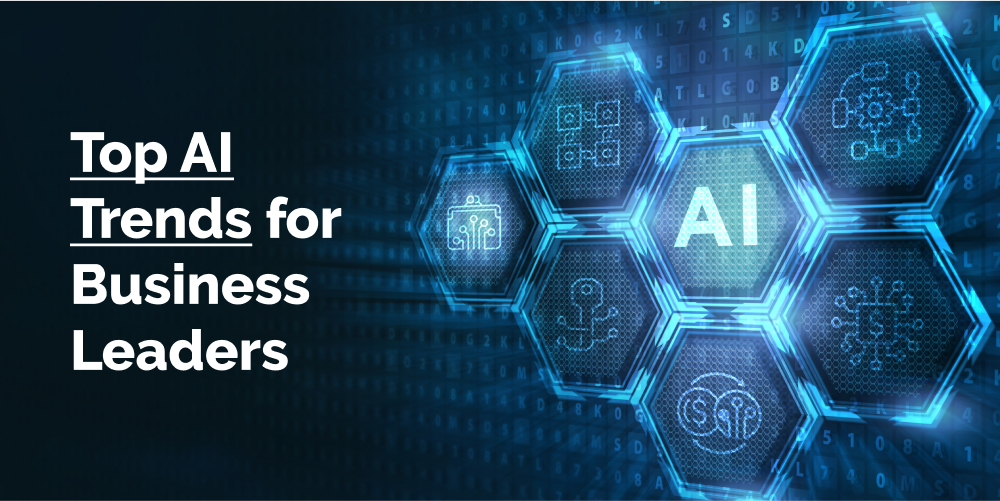Introduction
Artificial intelligence (AI) adoption has been accelerating rapidly in recent years. According to IDC, global spending on AI systems is predicted to grow by 20% in 2024, reaching over $60 billion. AI is transforming how companies across industries operate – from manufacturing and logistics to marketing and customer service. As we enter 2024, business leaders have a major opportunity to further leverage AI to drive greater efficiency, insights, and growth. But realizing AI’s full potential requires the right strategy and execution.
Selecting the Right AI Tools and Applications
AI encompasses a wide range of technologies like machine learning, natural language processing (NLP), computer vision and more. There are many categories of AI tools that businesses are adopting:
- Chatbots and Virtual Agents: AI-powered bots are automating customer service and support to enhance satisfaction. Chatbots can handle routine inquiries while connecting users to human agents for complex issues.
- Predictive Analytics: Sophisticated machine learning algorithms can uncover insights from data to forecast trends and behaviors. This enables smart decision making around inventory, logistics, targeted marketing and more.
- Computer Vision: AI can automate tasks like processing documents, monitoring workflows and inspecting product quality through video, image and sensor data. Computer vision boosts efficiency in manufacturing, retail and other settings.
When evaluating and selecting AI solutions, it’s crucial to start with your specific business goals and use cases. The best AI tools address current pain points and opportunities. Leading retailers like Starbucks and Sephora have adopted AI for custom product recommendations that increase sales. Manufacturers like BMW use computer vision to quicken quality assurance.
Building a Data Infrastructure to Support AI Initiatives
The fuel for any AI system is data. The quality and breadth of data available to feed algorithms directly impacts their learning and performance. For many companies, consolidating relevant datasets from multiple siloed sources is the first step. Data also needs cleansing to remove inconsistencies, errors and duplicate entries that create noise.
Structured data like sales records and inventory logs is valuable for training AI models. But unstructured data like social media activity, customer support logs and IoT sensor streams also provide useful signals. Businesses need infrastructure to ingest both real-time and historical data at scale.
Tools like data lakes, data warehouses and data ops pipelines are essential to manage the continuous data lifecycle. Documenting and monitoring data flows through proper metadata is key for governance. This data foundation powers impactful AI applications.
Investing in AI Talent and Building Internal Capability
The worldwide shortage of AI talent remains a top barrier for many enterprises. Leveraging partnerships with AI vendors can provide a jumpstart. But for long-term success, businesses need to invest in building in-house AI teams.
Hiring or upskilling data scientists, machine learning engineers and AI model trainers is advised. Complementing technical experts with AI product managers and project coordinators also creates a well-rounded team. Proper training programs, attractive compensation and opportunities to publish research help attract and retain talent.
Fostering cross-functional collaboration is key to driving adoption. AI teams should partner closely with business units to refine solutions. Change management and communication campaigns make rollout smoother. Ultimately, the goal is embedding AI within everyday workflows across the organization.
Embedding AI into Core Business Processes
The full rewards of AI come from transitioning beyond small business the best isolated pilots to organization-wide deployment. This requires reimagining business processes with AI integrated at their core.
For example, supply chain operations can have predictive analytics inform just-in-time inventory. Pricing can leverage AI to respond to competitors. AI chatbots can be the frontline of customer support. Workflow automation frees up employees for higher-value work.
Change management is vital when redesigning processes. Employees may be hesitant or need upskilling. Starting with non-critical workflows helps build confidence. Leadership must consistently communicate the benefits of AI-powered change. Measuring direct gains, like costs reduced through automation, also builds buy-in.
Monitoring, Governance and Ethics of AI Systems
Like any business technology, AI systems require monitoring and governance. Tracking performance metrics helps detect any degradation and trigger retraining. Data drift also needs regular evaluation to ensure models have representative samples.
AI systems should be audited for unfair bias, security vulnerabilities and appropriate transparency. Organizations like the IEEE have published ethical AI standards to guide policies. The stakes are especially high for AI supporting critical decisions in areas like medicine, finance and transportation.
Promoting responsible and ethical AI requires expertise, oversight and open communication. Some techniques like differential privacy preserve anonymity in datasets. Providing explanations for model outcomes also builds trust and accountability.
The Future of Business AI
In 2024 and beyond, AI capabilities will continue rapidly advancing. Areas like predictions, personalized recommendations and conversational AI will become even smarter. New frontiers like AI-human collaboration and multi-modal AI combining computer vision, speech and text understanding will emerge.
The businesses that invest boldly and broadly in AI now will have a distinct competitive advantage. Becoming an AI-driven organization takes strategy, talent and a willingness to transform. But the rewards of improved efficiency, faster innovation and deeper customer insights make the effort worthwhile. The future belongs to companies that fully embrace AI’s possibilities.
Conclusion and Key Recommendations
To maximize the benefits of AI in 2024, business leaders should focus on choosing the right AI applications, strengthening data pipelines, developing in-house expertise, embedding AI throughout operations, and implementing responsible AI governance. Companies that lay this groundwork will position themselves to thrive at the forefront of the AI revolution.



